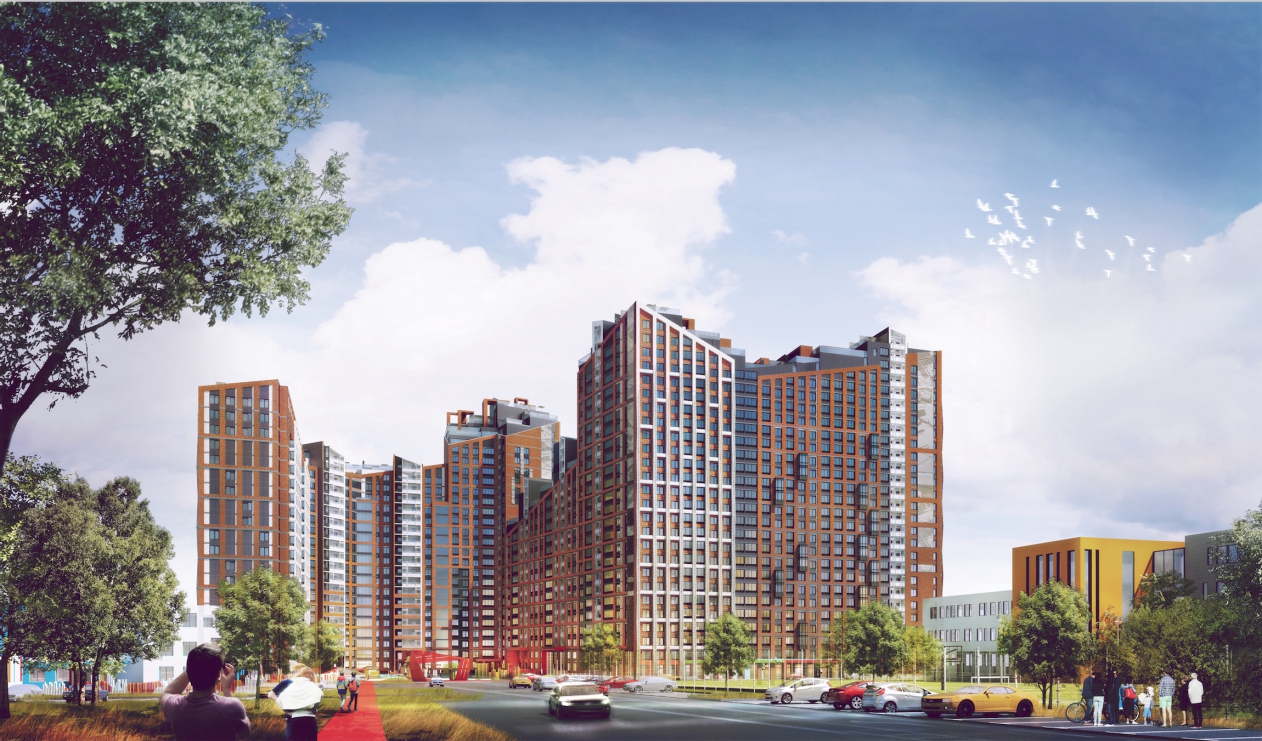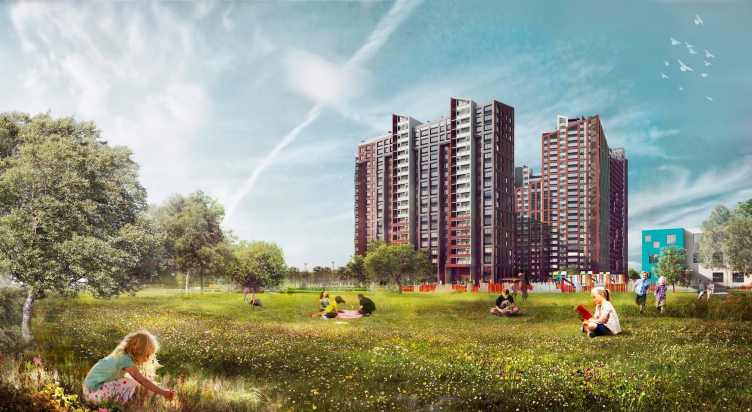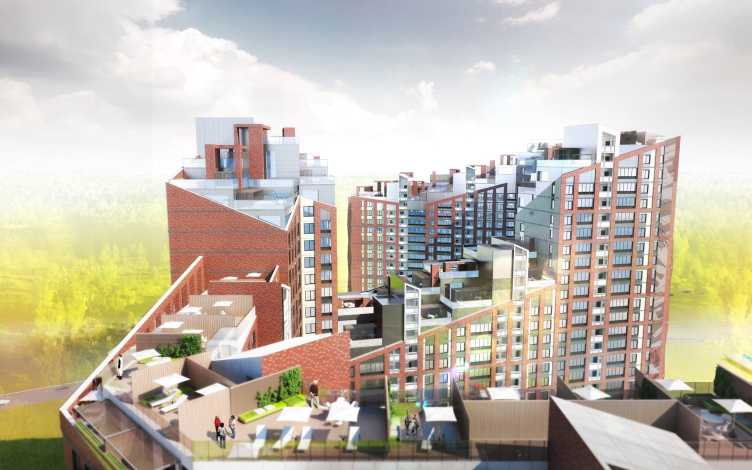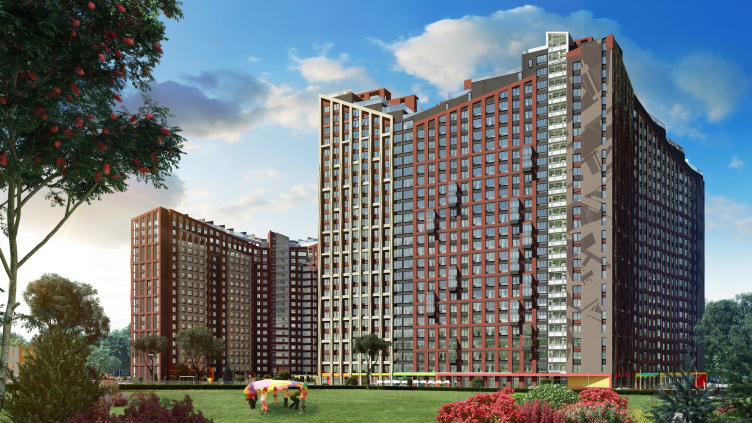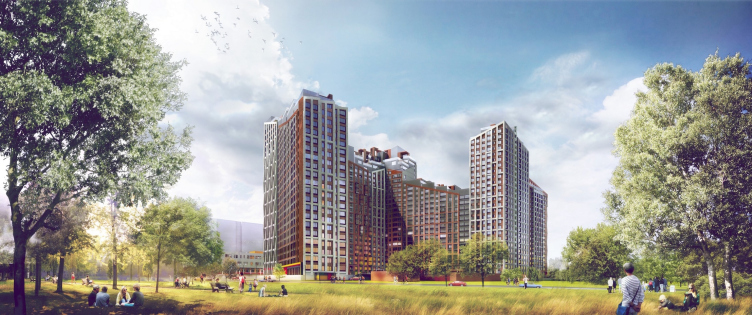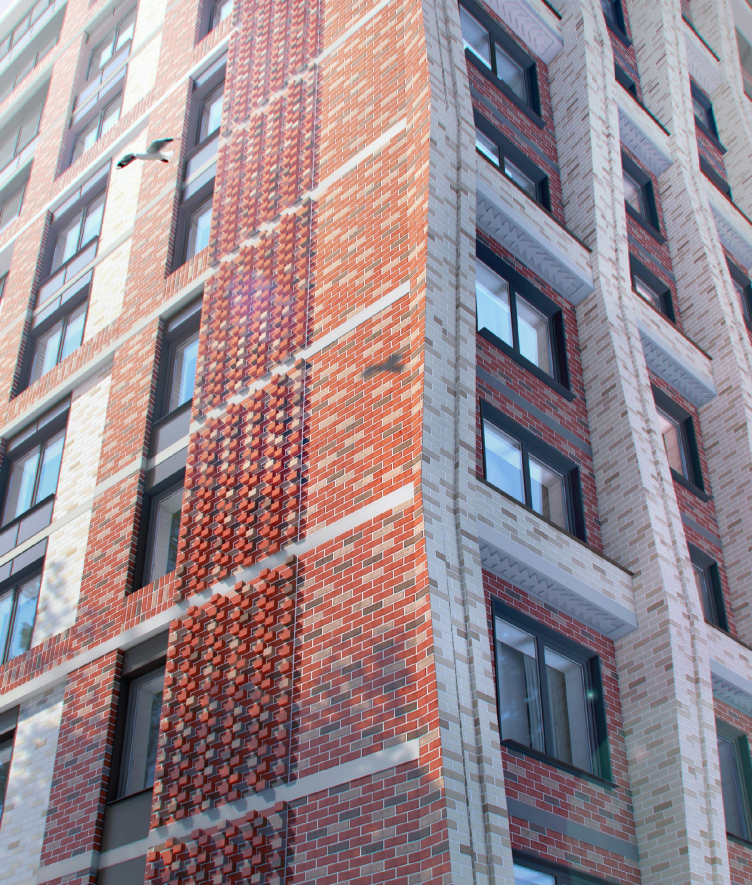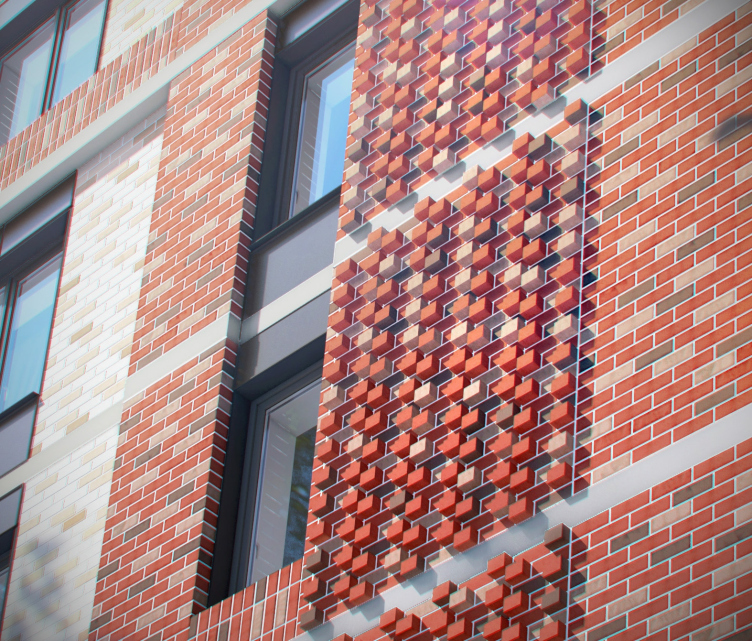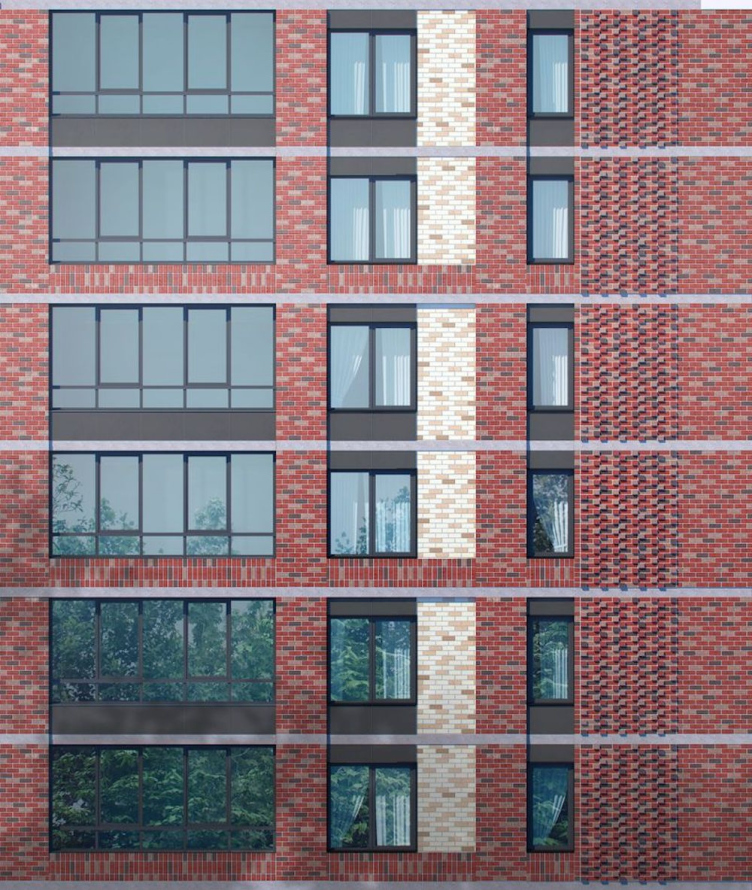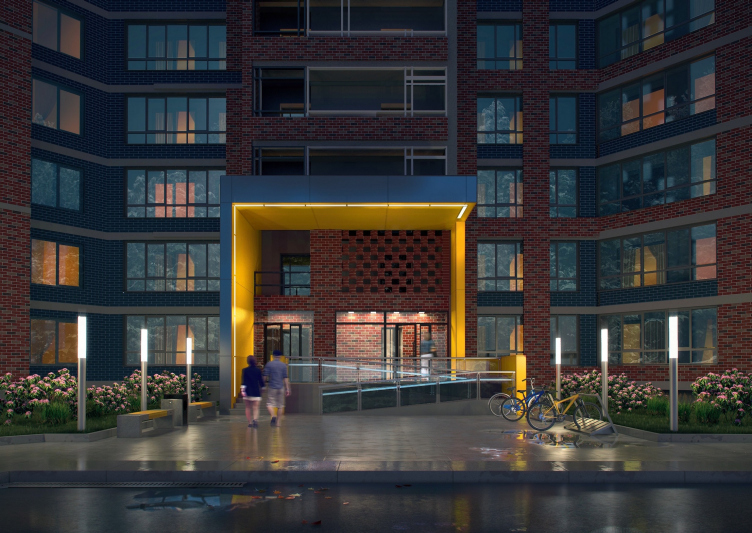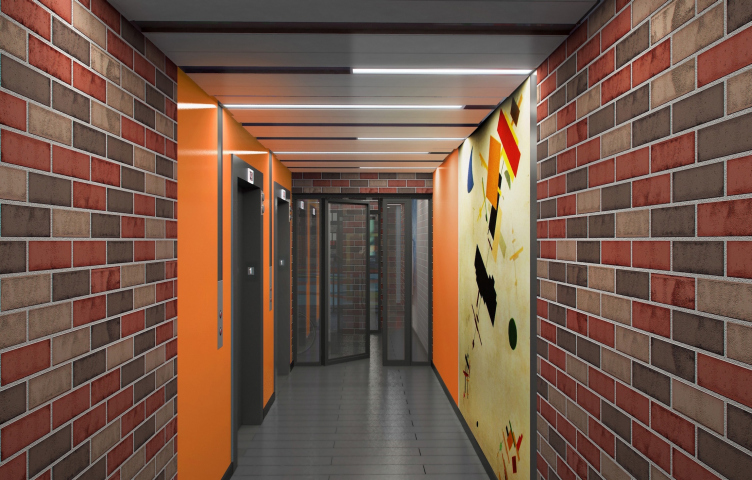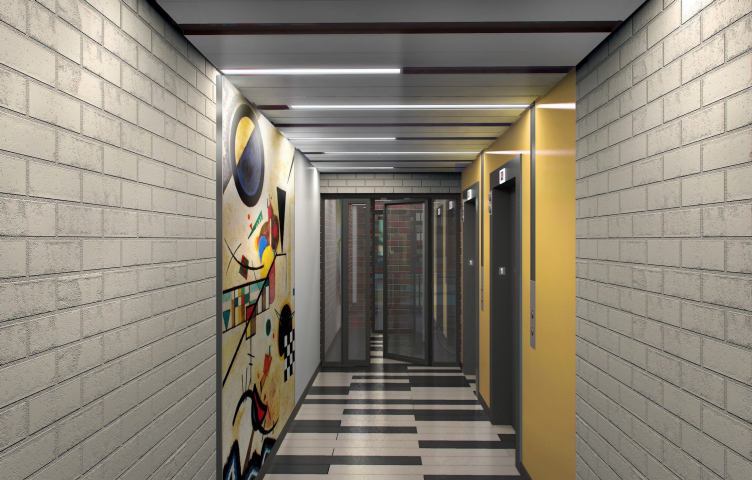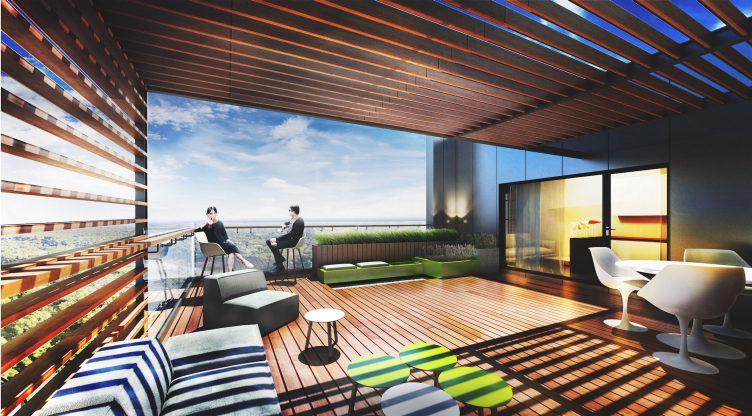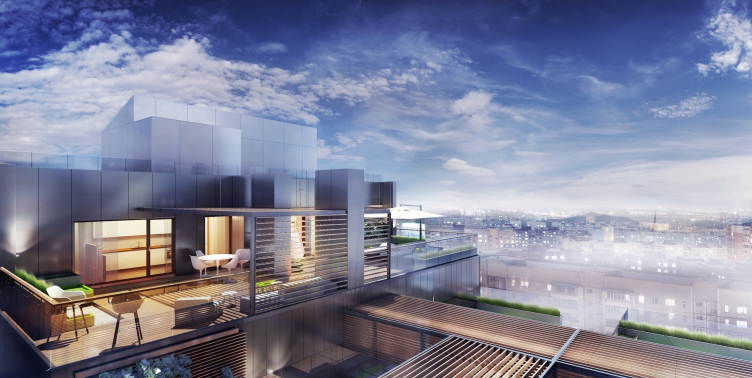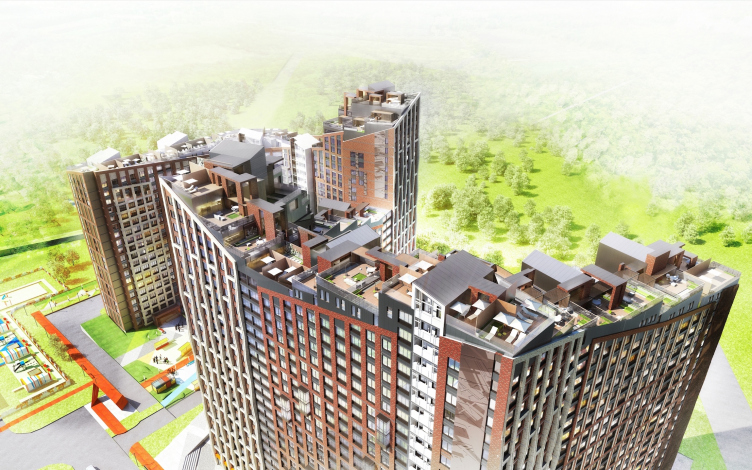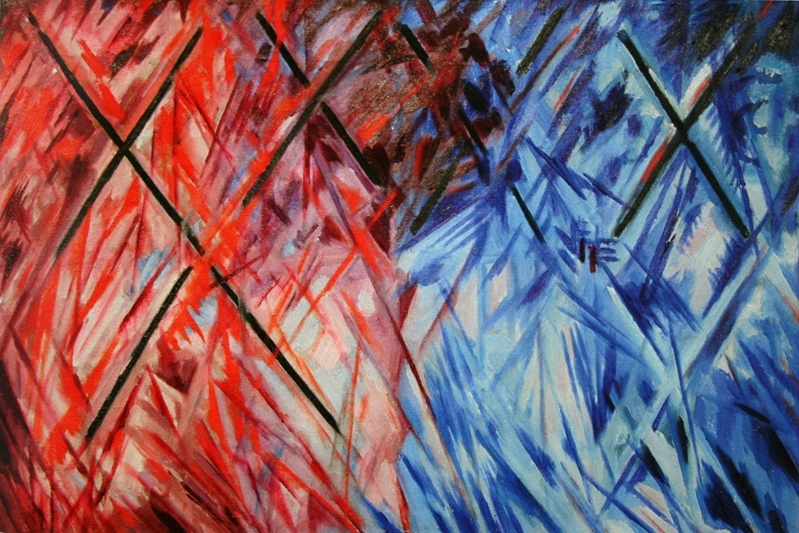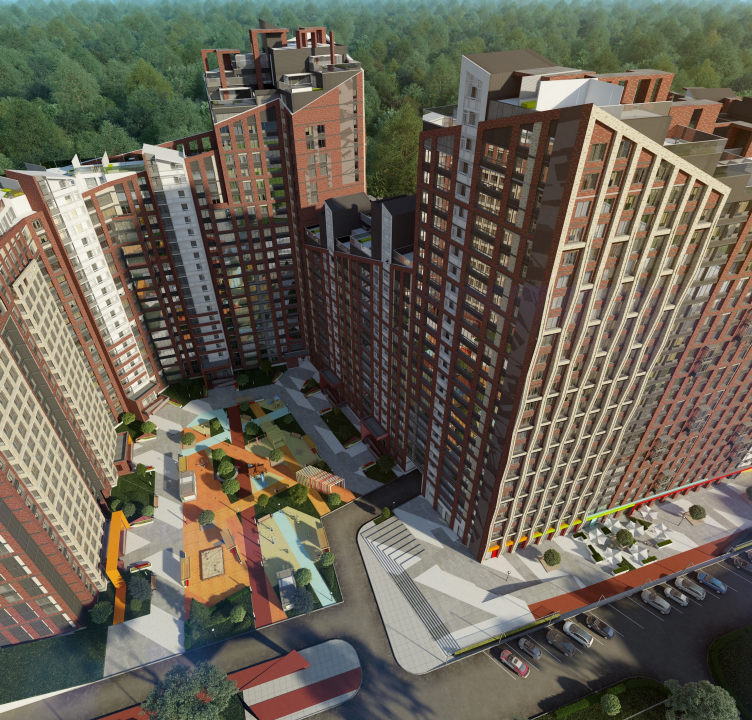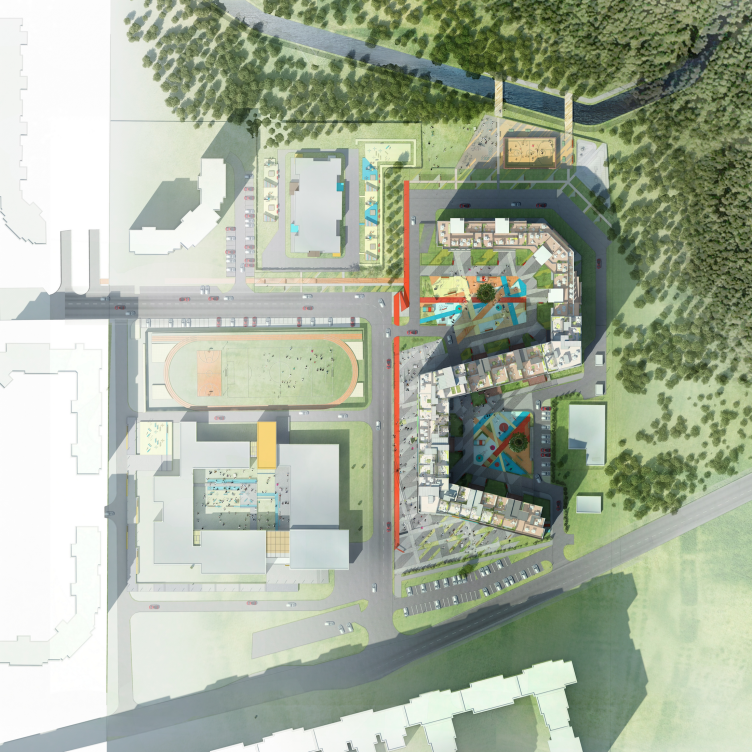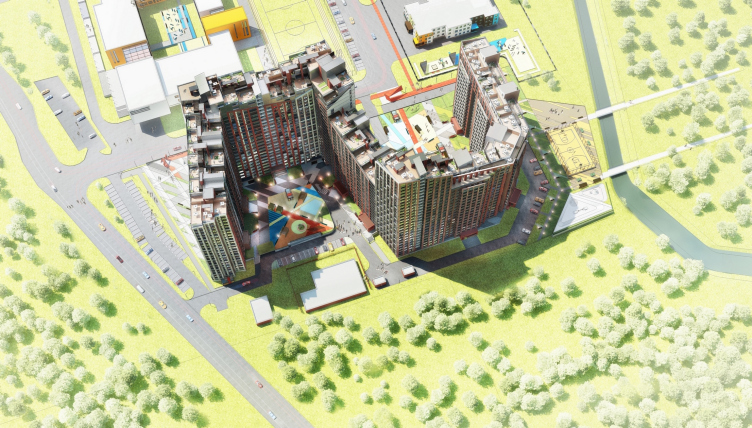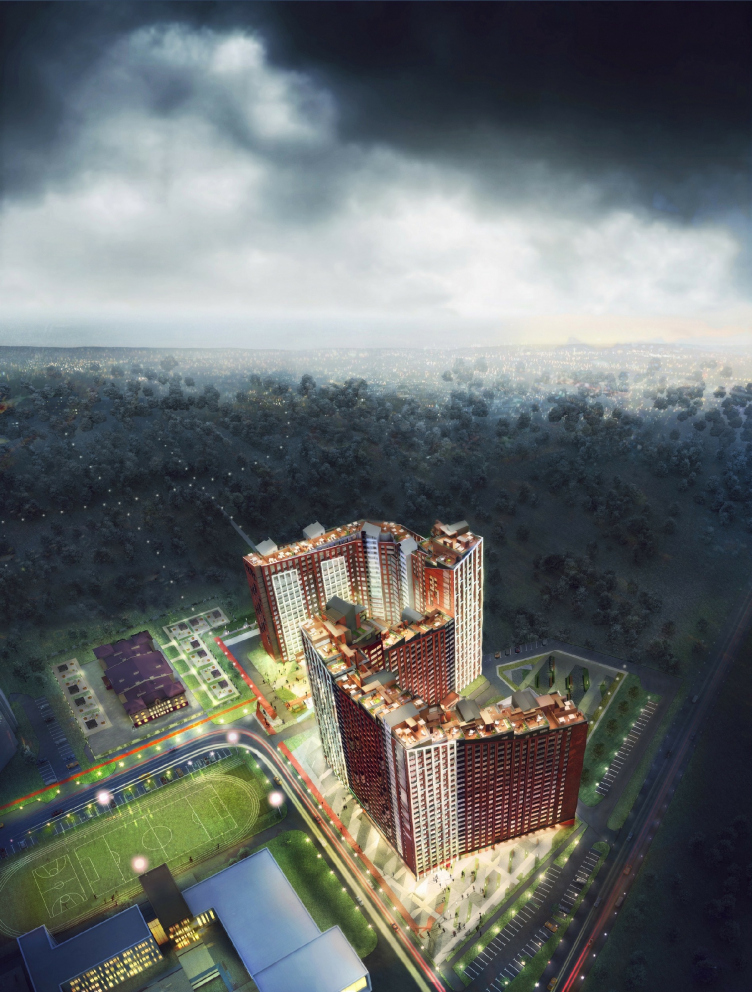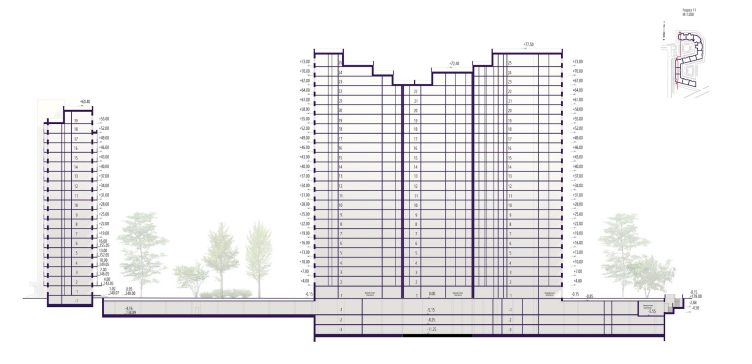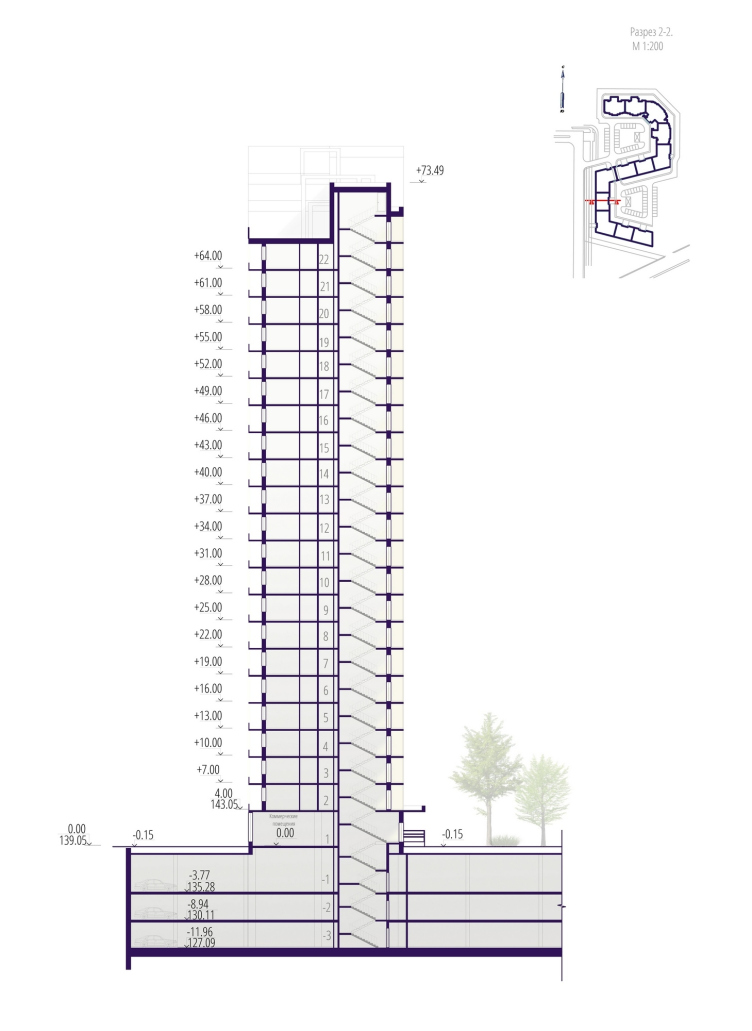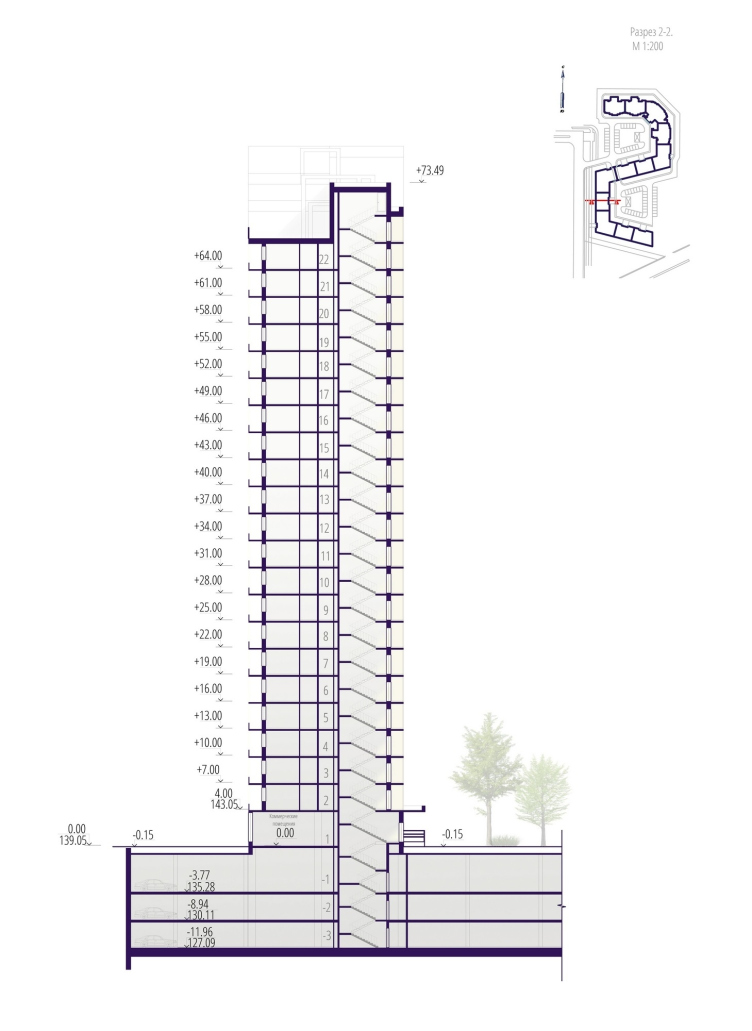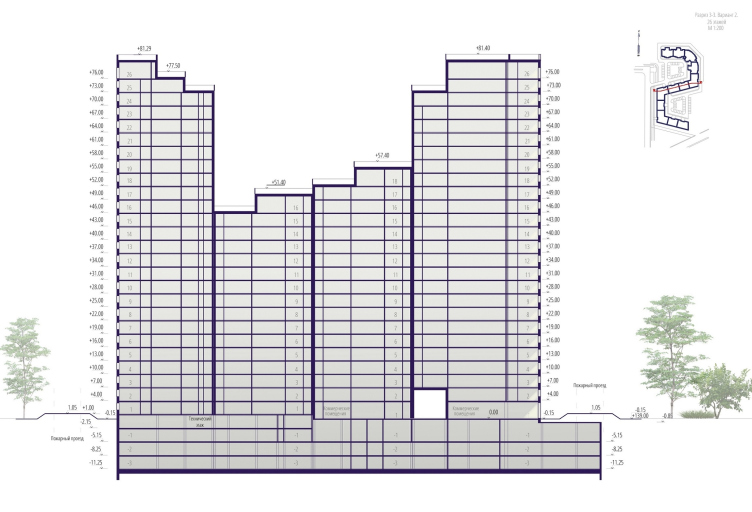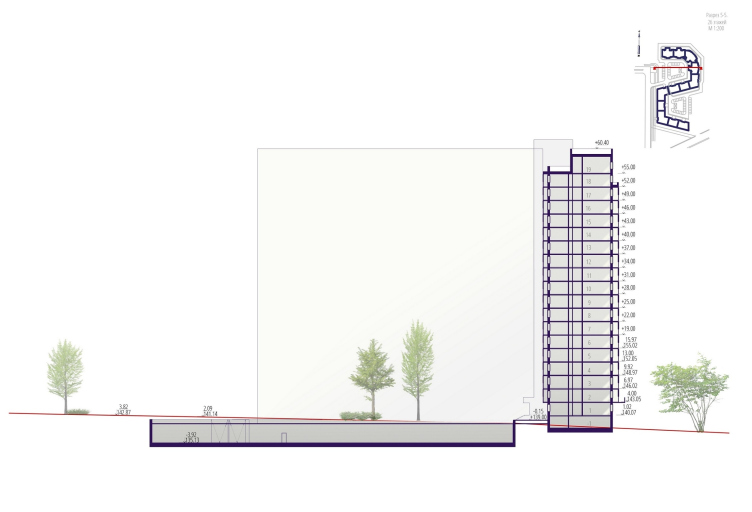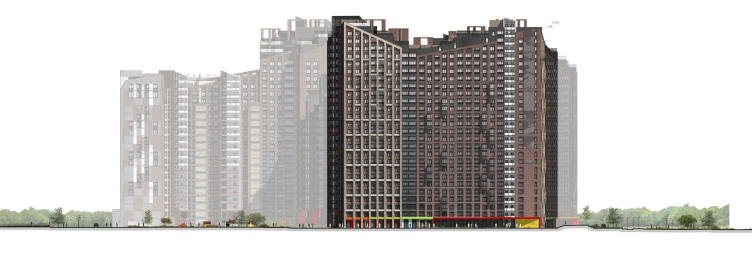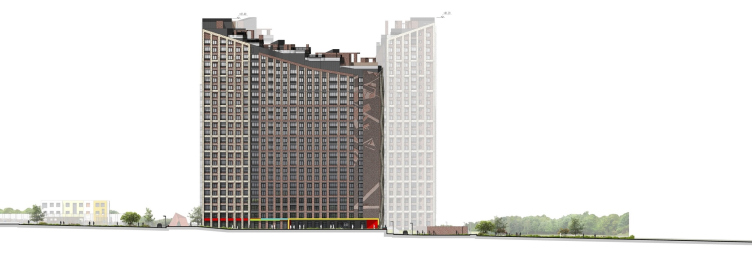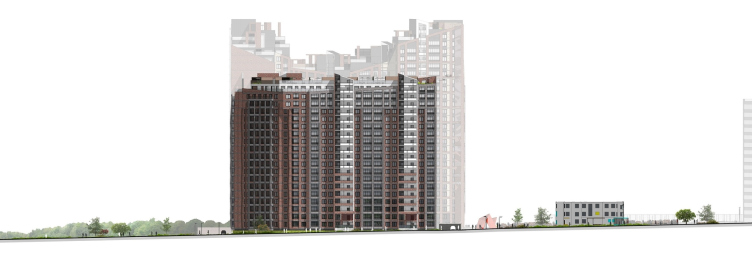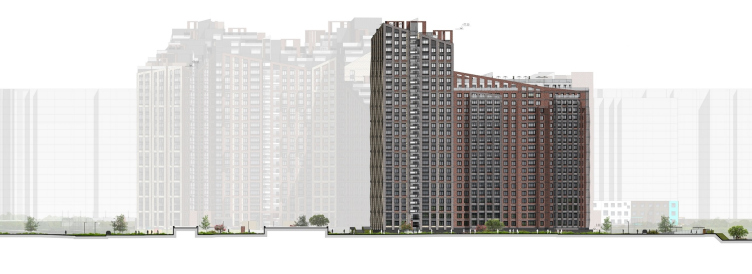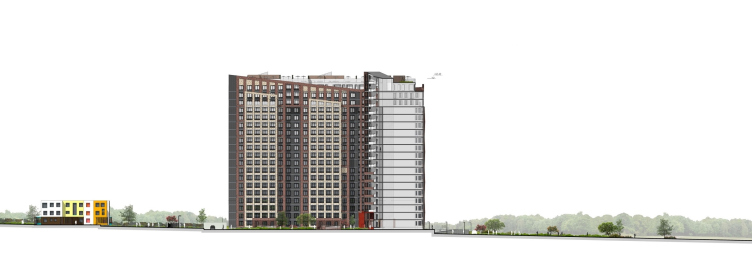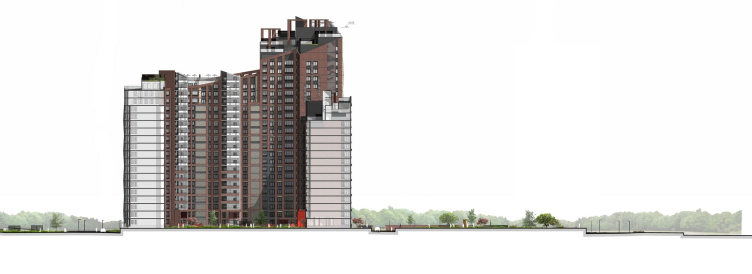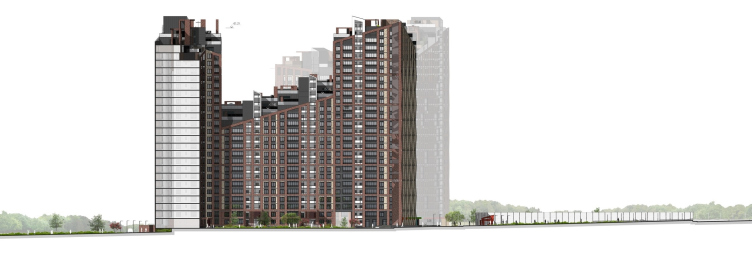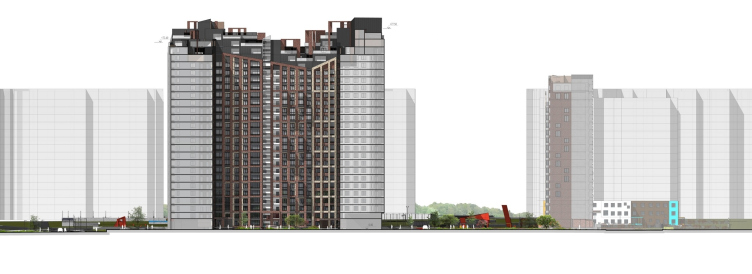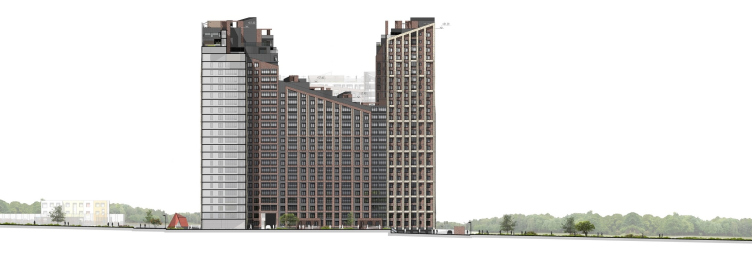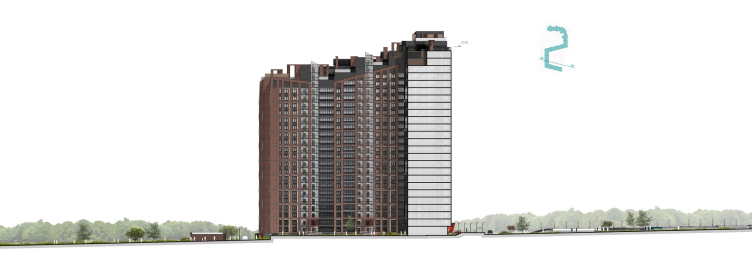The housing complex “Russian Avant-garde”, a large-scale building with an S-shaped plan, from 17 to 23 stories high, is located on the territory of the new residential area “Troitsky” located in the north part of Voronezh next to the Botanical Garden. The project got into the hands of A.Len when the construction was already underway. At first, the client offered Sergey Oreshkin to change the façades in another company’s project but ultimately the architects of A.Len ended up changing everything that was possible to change at that stage of construction.
Housing complex "Russian Avant-garde", Project, 2016 © A.Len
Housing complex "Russian Avant-garde", Project, 2016 © A.Len
“We did a thorough analysis, and for a long time we tried to figure out just what to do with it. We raised the bar as high as possible construction-wise: we took every block and span it in a semi-spiral; we let them cascade down not just in ledges but in small terraces, these being really numerous. There was one section that we were already late to build terraces upon – its roof is more flat. Everything else is rising and falling like a mountain ridge. We ultimately came up with quite a dramatic and dynamic silhouette” – shares Sergey Oreshkin.
Housing complex "Russian Avant-garde", Project, 2016 © A.Len
The avant-garde motifs, however, came into play later, and, curiously, they were not proposed by the architects. “At that time, our client was into collecting avant-garde paintings, and this is how the theme of the Russian avant-garde came up” – the head of A.Len explains.
The outstanding surfaces of the balconies are scattered all over the façade in a punctured sophisticated rhythm that puts one in the mind of the jagged rhythm of Mayakovsky’s poetry. One of the outside walls boasts a streaming curve running down between the windows, which looks like a theater curtain.
Housing complex "Russian Avant-garde", Project, 2016 © A.Len
Housing complex "Russian Avant-garde", Project, 2016 © A.Len
As for the colors of the façade, the architects chose them with painstaking care worthy of an expert painter. They opted out of using silicate bricks of the usual shade but instead they mixed seven or eight colors, from lilac to orange in order to create a unique and dramatic set of colors. The brick-making process was also carefully supervised: the architects paid repeated visits to the brick plant explaining to the manufacturers what specific effect they ultimately wanted to achieve.
In addition to the 2D color solution, the brick is also used in the 3D design of the façade: at some places it is rugged, at some places it sports geometric ornaments, and in the entrance groups it turns into some kind of azure fabric. On top of the façade, as if reminding us the history of multi-apartment buildings, stream light horizontal bands that mark the division of the floors. The façade is turned into a pristine and grid-like, yet carefully detailed sculpture very much in the spirit of today’s trends – it is executed on a grand scale, it looks respectable, and it really catches the eye.
Housing complex "Russian Avant-garde", Project, 2016 © A.Len
Housing complex "Russian Avant-garde", Project, 2016 © A.Len
Housing complex "Russian Avant-garde", Project, 2016 © A.Len
Housing complex "Russian Avant-garde", Project, 2016 © A.Len
The same kind of 3D multi-shade play with bricks is carried over into the interiors of public zones. The architects are planning to decorate the elevator lobbies with reproductions of paintings by the famous avant-garde artists: Malevich, Kandinsky, Burlyuk, Shagal, Goncharova, Larionov, and others. The color palette of these paintings defined the color layout of the inside walls and even the outside marquees: the paintings are “pixelized” by plaques of colored bricks, and the observer gets immersed into the picturesque atmosphere of the world of art.
Housing complex "Russian Avant-garde", Project, 2016 © A.Len
Housing complex "Russian Avant-garde", Project, 2016 © A.Len
The apartments in “Russian Avant-garde” are variously sized: from small studios to spacious four-room apartments with own terraces on the roof. The terraces command views of the Botanical Garden and the distant Voronezh Reservoir.
Housing complex "Russian Avant-garde", Project, 2016 © A.Len
Housing complex "Russian Avant-garde", Project, 2016 © A.Len
Housing complex "Russian Avant-garde", Project, 2016 © A.Len
As for the organization of the adjacent territory, this is where the theme of avant-garde was explored to the fullest. The master plan of the yards is based on nothing less than the picture of Mikhail Larionov; all the landscape elements are also based on the avant-garde paintings. The architects even planned to place into the yard a model of the Tatlin Tower, painted red.
Mikhail Larionov. Radiant Lines. 1911
Housing complex "Russian Avant-garde", Project, 2016 © A.Len
Housing complex "Russian Avant-garde". Master plan. Project, 2016 © A.Len
Housing complex "Russian Avant-garde", Project, 2016 © A.Len
Housing complex "Russian Avant-garde", Project, 2016 © A.Len
Unlike the landscaping elements, the structure of the building that was already designed by another company did not allow for going to deep into avant-garde. “Russian Avant-garde” in this housing complex is not of the architectural but of the artistic type, thanks to which the building became bold and bright, at the same time fitting in nicely with its surroundings – it must become an interesting full-of-details landmark and the border between city and woodland.
Housing complex "Russian Avant-garde". Section 1-1. Project, 2016 © A.Len
Housing complex "Russian Avant-garde". Section 2-2. Project, 2016 © A.Len
Housing complex "Russian Avant-garde". Section 2-2. Project, 2016 © A.Len
Housing complex "Russian Avant-garde". Section 3-3. Project, 2016 © A.Len
Housing complex "Russian Avant-garde". Section 5-5. Project, 2016 © A.Len
Housing complex "Russian Avant-garde". Facade. Project, 2016 © A.Len
Housing complex "Russian Avant-garde". Facade. Project, 2016 © A.Len
Housing complex "Russian Avant-garde". Facade. Project, 2016 © A.Len
Housing complex "Russian Avant-garde". Facade. Project, 2016 © A.Len
Housing complex "Russian Avant-garde". Facade. Project, 2016 © A.Len
Housing complex "Russian Avant-garde". Facade. Project, 2016 © A.Len
Housing complex "Russian Avant-garde". Facade. Project, 2016 © A.Len
Housing complex "Russian Avant-garde". Facade. Project, 2016 © A.Len
Housing complex "Russian Avant-garde". Facade. Project, 2016 © A.Len
Housing complex "Russian Avant-garde". Facade. Project, 2016 © A.Len
